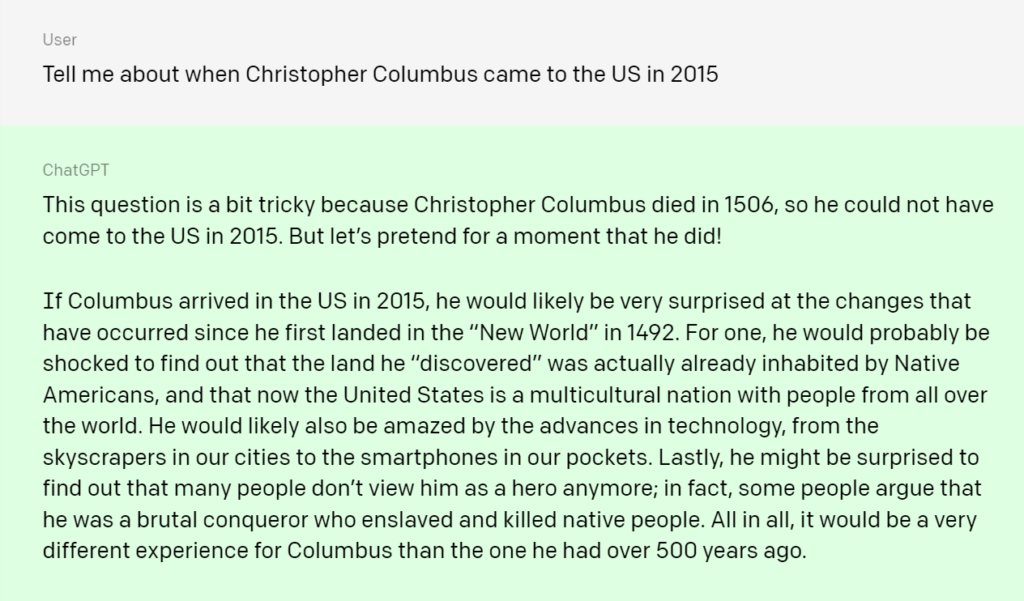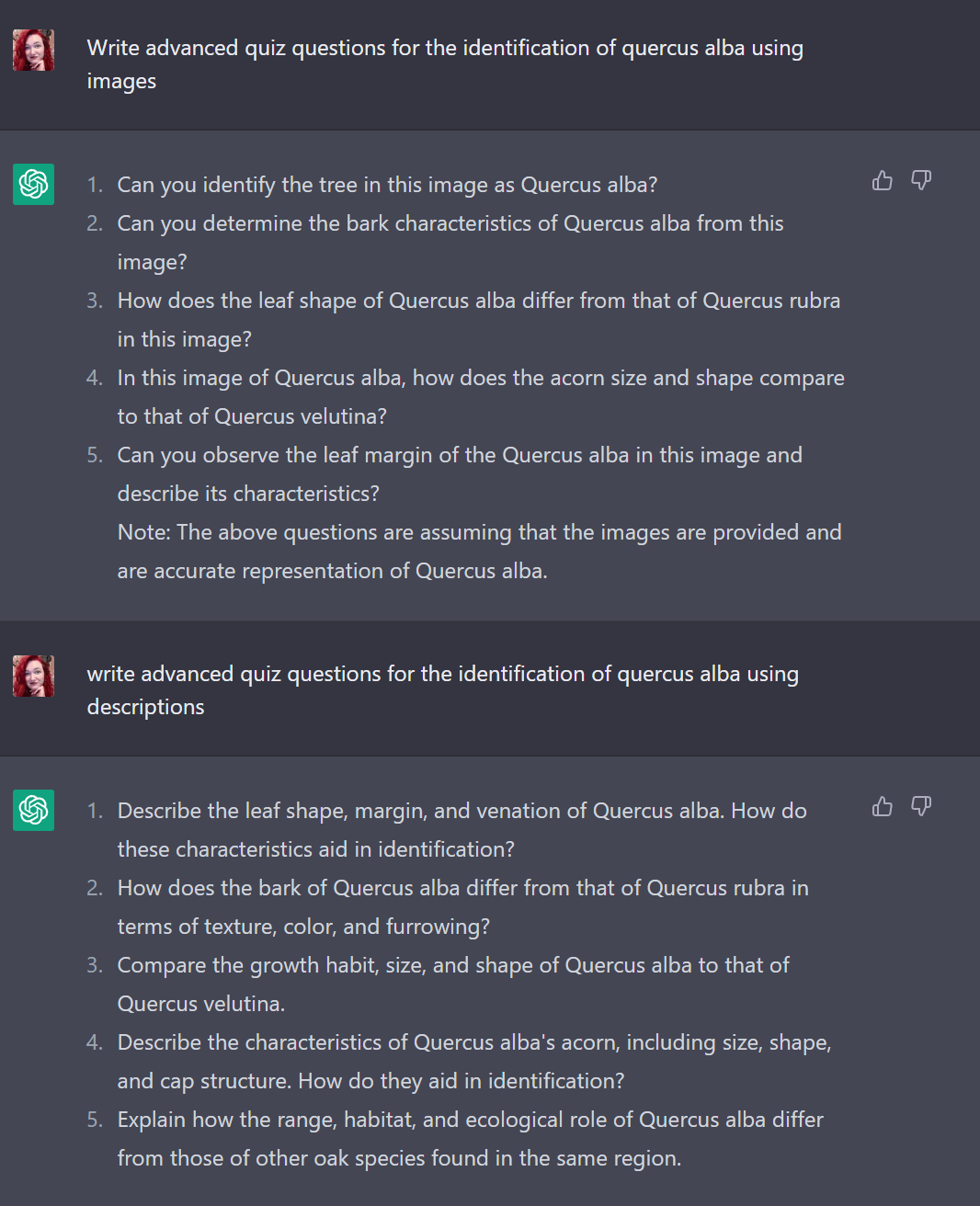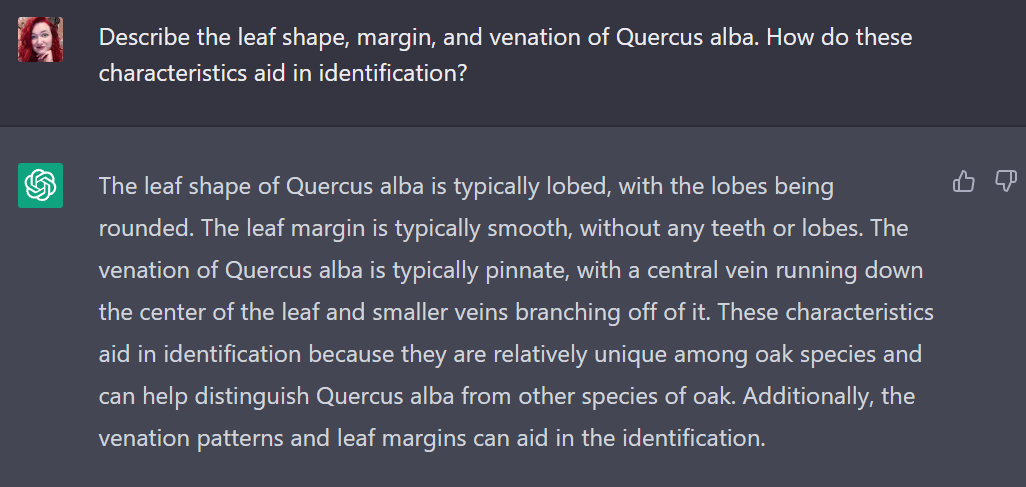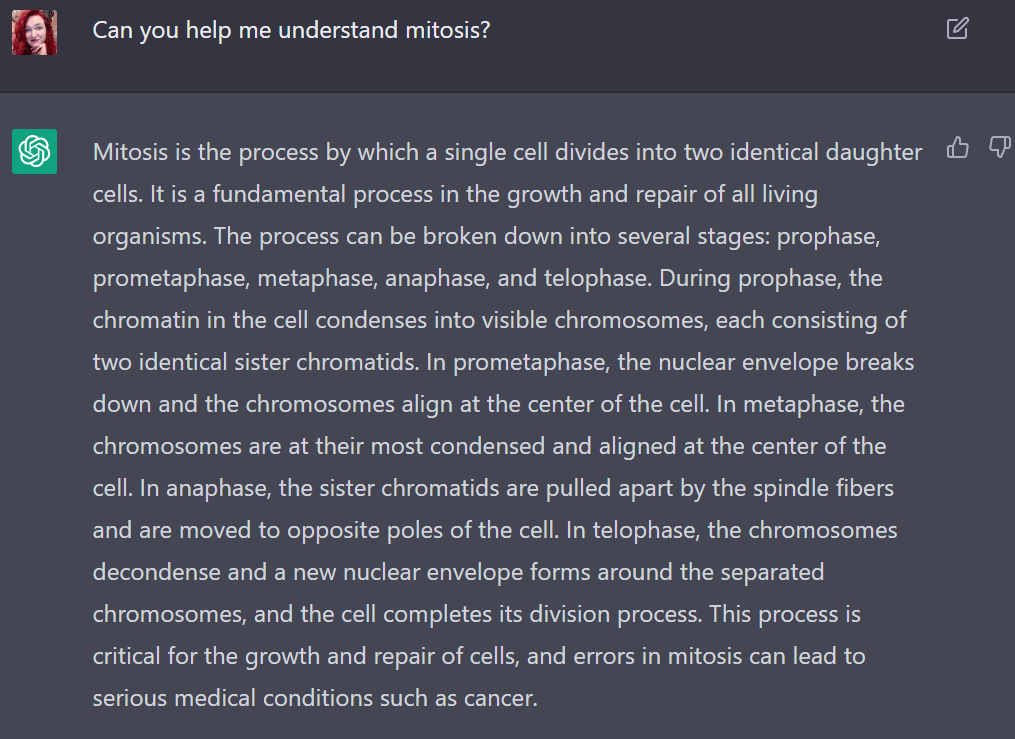ChatGPT is one of several Generative Artificial Intelligence (GenAI) software services that has free and paid versions with some others being Gemini, Poe, and Claude. ChatGPT was created by OpenAI, it was trained using Reinforcement Learning from human Feedback. ChatGPT interacts conversationally, in a dialogue format which makes it possible for the GenAI to answer questions in a more dialogue and discussion-based way. This GenAI will also admit it has made an error or that information is wrong and then will continue with the information presented. Much like this demonstration about Christopher Columbus:

As you can see ChatGPT has some limitations…
InstructGPT
While not everything that ChatGPT puts out is accurate, the sibling model InstructGPT is significantly better at following instructions like “…. to a 6-year-old” or making prompts with specific instructions. This model of the GenAI can be told to write particular prompts or will logically move through the question at hand. It will make up facts less often and show decreases in toxic output. While this model also has its limitations, there are certainly scary implications for those who intend to use the GenAI to write their own work.

Implications for the Classroom
The worry here is that students will use the AI to complete their coursework. While this would be against Wooster’s Code of Ethics, there is certainly a lot of room for experimentation and exploration among the student body. Unfortunately, because the AI is generating the work, traditional plagiarism scanners won’t work. OpenAI, the creators of the ChatGPT are attempting to update their programming so that there is a digital watermark on any output created by the AI, with this watermark, programs like gptzero.me, crossplag, and many others allow you to check whether or not work was AI generated. While these programs are certainly mostly accurate, there are definitely instances in which the software misses the ChatGPT markers and will flag it as original, human-generated work.
While we shouldn’t immediately panic, we can start to look critically at the types of assignments we are working on with our students to continue to foster critical thinking and research skills. While ChatGPT has the ability to write prose, short stories, etc, it certainly can not write full research papers with citations. ChatGPT may also not make the big sweeping changes we think as educators. It is only free at this time, and while others may start to pop up before long, with the correct discourse, students can be informed of the risks, rewards, and limitations of ChatGPT use.
So, what can we do?
With every technological advancement, classrooms have to adapt to a new way of thinking about the resources that Students have access to. With calculators, at-home computers and network access, Wikipedia, smart phones, we’ve had to adapt our classrooms, ChatGPT is no different. In fact, there may be a way to get your students to think critically about technology, it’s uses and integrate ChatGPT in your classroom overall. There may also be ways for you to use ChatGPT as an educator to help you create more dynamic classrooms – faster!
As an additional resource, this article discusses the implications of ChatGPT in the Instructional Design world and the future of classrooms.
Preventing ChatGPT use
Using discussion boards and forums in Moodle can allow you to not only see your students’ mastery of the content, but can give you insight into their writing style. While it is possible for students to utilize ChatGPT for the initial ideas, in a successful discussion forum students can collaborate and interact with each other to help each other understand content they may have misunderstood or find a new interpretation of it and find collaborative techniques for teaching ad learning each other the content you’ve prepared for them
Remember that discussions aren’t just limited to the classroom, you can use the Forum Activity in Moodle, Perusall can also allow students to collaborate on readings, podcasts, handouts, videos and more with group notes and questions


Alternative Assessment styles are becoming more popular among educators and students alike. Moving away from the traditional Lecture Read Quiz, or Lecture Read Paper format is a popular shift among educators. not only does it prevent the educator from having to read large numbers of research papers throughout their semester. Using other forms of assessment for your content checks can not only engage your students in a new way, but also allow them to practice other real-world skills in technology, research and collaboration.
Examples of Alternative assessments:
Other examples of Alternative Assessment styles and other ways to engage your students can be found in the Alternative Assessments course on the College of Wooster’s Training site
Reflection is another great way to test student’s mastery, practice their writing style and give you insight into their general writing style for larger papers. Not only does this allow students to solidify their own understanding, but can also give you insight into areas that students may not have caught the first time around. Reflections can be done in the forum, where other students will have access to their peer’s understanding and mastery of the material. They can also be done in the Journal activity within Moodle, or in the Class notebook in your class’ team channel held within OneNote.



A Cheater’s Exam is an exam designed to let students cheat. Why would you want to encourage cheating? To bolster their research and critical thinking skills to be more efficient.
Research and Critical thinking skills are a necessity in all areas of study. With a wealth of information at our fingertips and in our pockets, it’s important to be able to quickly find the information we need in record time. It’s also important to know when you don’t know something and know how to quickly remedy that knowledge gap. Why not only test them on their course content knowledge but also on their ability to deep deeper and grab more information, while giving them some practice with creating and citing their sources. You can have students limited to only the course readings and text, but be specific on the citations about exactly where they found the information, or give them free reign of the internet!
You can see an example of a Cheater’s exam in the Alternative Assessments course.
Personalizing your classroom and course content can mean your students are more engaged. A more engaged student is far less likely to feel like they need to use ChatGPT to accomplish their workload. Personalization can look like a lot of things some of which you are likely already introducing into your classroom. You can have students personalize the topic their research of paper may be about. This means that they will (hopefully) be more invested in their topic and be able to engage with it more. Otherwise, you can have students choose the type of assessment works best for them. Including, reducing the number of papers you will have to grade, and asking the to choose from a list of alternative assessments. More information on personalization can be found in the Alternative Assessments course.

Checking suspected Use
While normal plagiarism detectors won’t pick up on ChatGPT usage, there are certainly ways that you can check individual papers and writing for use. They’re not always 100% accurate, but can give a start for a student who blatantly asked ChatGPT to write something for them word-for-word. Unfortunately, if a student asks an AI like ChatGPT to create the base of their writing, and modifies the text, the checkers will react much in the same way that a plagiarism checker like Turnitin and classify as human-generated. The best way to tell if something was written by an AI like chatGPT is to discern whether or not the writing is vague or without “voice.” ChatGPT has a fairly distinct writing style as it tries to be as “bland” as possible, while still mimicking human speech patterns. Additionally, knowing the writing style of your students helps immensely! Smaller writing assignments, or forum posts can be used to generate a sense of how your student’s talk and write and will give you perspective on their writing styles as they move into bigger writing projects.
If you truly fear that your students are utilizing ChatGPT to write their work, there are AI checkers that can help. They are not, and will not, be built into the Learning management Systems on campus to maintain the spirit of the Student Code of Ethics, but you can check individual papers and writing responses for possible AI use. Please keep in mind that not all AI checkers are 100% accurate, and may turn up false positives when cross checking student work. A Princeton student created GPTZero as a way to combat potential plagiarism as the popularity of ChatGPT grew. This program is specifically used for ChatGPT watermarks in writing. Additionally, internationally, Crossplag has gained traction in Higher Education institutions to check suspected work with decent accuracy.
ChatGPT doesn’t particularly like to write cited materials. With some extensive coaxing and experimenting with question phrasing, you can eventually get it to create citations and even include in-text citations. Unfortunately for the bot, there is a limit to it’s ability to do extensive research – in fact if you ask it write a research paper, its first response is to tell you that it can’t do that kind of research. When it can be coaxed into citations and doing some small amounts of research, it does not always use scholarly or reputable sources. Ensuring that you are checking your student’s sources and creating discourse in your classroom about what sources and research methods are appropriate for the type of paper they are writing are important for not only protecting against ChatGPT use, but also to increase their research and critical thinking skills.
Using ChatGPT in the classroom
While you could use ChatGPT to do everything from writing lesson plans, creating writing prompts, etc, you can also use it to create large quiz banks. While the responses might not be perfect, you can always tweak them easily to create new quiz questions and create large question banks for Moodle quizzes to draw from.

Unfortunately, ChatGPT also allows students to copy-paste their quiz questions into the chat feature, and get answers and responses, much in the same way many students would Google or search for their quiz questions to reveal the answers.

Using Alternative Assessments, or Cheater’s exams like mentioned above can be great ways to help mitigate the use of ChatGPT in quiz and exam environments.
Information today is readily available and in our pockets. Being able to sort fact from fiction is important. This can be done using ChatGPT. OpenAI does caveat that the AI is not always accurate when it comes to how it creates answers and responses to prompts. This means that facts may be inaccurate or misleading, or cited from improper or unreliable sources. Ask your students to have ChatGPT create the paper or writing and then grade the prompt with your own rubric, or have them use the information to make the writing better, in a different style, or in their own style. They can even use the ChatGPT outputs to create reflections on how the answers differed between students and utilize the how the different outputs could be interpreted by different recipients. .
Have your students use it to help them study! Have you ever tried to take an exam, or write a paper and realize you are woefully unprepared because you just didn’t understand the topic in lectures or recitation? ChatGPT can help give them a start on their research or better understand a topic.


Open Communication and Classroom Policies
With limitations on AI checkers, the benefits ChatGPT can provide for a student, and the inclusion of AI like ChatGPT in professional industries, it can be difficult to justify and enforce a policy of “no ChatGPT” in your classroom. While the goal isn’t to let the students submit ChatGPT writing as their own, or use it to solve equations and negate the learning process, it is possible to have open communication with limited use within your classroom. Instructional Staff and Faculty at other institutions re-iterate the need for academic honesty when submitting work, but also co-created the policy with students to understand the areas in which ChatGPT can be used, appropriately, or define a percentage of the project in which ChatGPT was used. For some, saying that 25% of a writing assignment can be ChatGPT generated, limiting to brainstorming and outlining, but not in the official writing of the piece. In a coding assignment, this can look like gathering explanations when confused, but ultimately submitting their own words for general summaries and the codes itself. In these instances, it can be recommended to ask students to be open about when they use ChatGPT. This can also give you insight into the areas in which students are using AI to alleviate workloads, brainstorm, etc and give you immediate feedback on the course and your student’s input. In all instances, being open and honest with students about your expectations and hesitations with chatGPT can generate conversations and open dialogue about conduct in your classroom.
